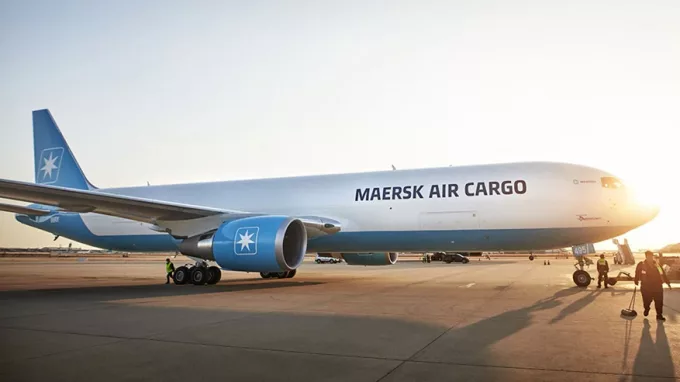Maersk Air Cargo applies to operate aircraft in UK
Maersk has applied for a UK aircraft operating licence, to operate charter and scheduled flights ...

Particularly striking in the reams of words Maersk issued today is the absence of mention of its air cargo division.
Its 127-page report and 35-page investor presentation barely refer to the growing air cargo operation.
That is in part, because it has folded air cargo, (much like CMA CGM has) into an ‘other’ division, Logistics & Services, which comprises “integrated transportation, fulfilment and management solutions”, that include land and air, as well as warehousing and supply chain management. Any upset in air freight is very well concealed.
But within that division, air and land services come under “Transported by Maersk”, which saw revenue decline by $69m, to $1.6bn, “mainly due to lower rates in air”, it said.
Revenues for the whole Logistics & Services division fell $507m, “impacted by lower rates, particularly in the air and haulage business, and by lower volumes for lead logistics and e-commerce”.
It added: “Profitability declined versus [the] previous year, with an increased emphasis on cost management to resize the organisation and tackle a lower-rate environment.”
It added that in Logistics & Services, revenue fell “due to destocking in the US in lifestyle and retail volumes, lower growth in Europe and China, as well as lower air freight rates, only partially compensated by increased revenue from the integration of LF Logistics and Martin Bencher”.
Maersk did mention air freight forwarding – which it said had been “exceptionally weak” in 2023, with low demand pushing volumes below pre-pandemic levels. However, its air freight volumes, in tonnes, rose from 211,000 to 295,000, as it integrated more capacity. This year it has two newbuild 777 freighters arriving, for which it has set aside $95m, according to its accounts (a drop in the ocean, forgive the pun, compared with its $2.8bn for containerships).
It also noted that, in air, exports from China to the US softened, although it saw an uptick to Mexico, adding: “Notably, tech products have been the driver of the decline in US imports from China and the rise of Mexican imports.”
More than half the decline in organic revenue was driven by the top 200 customers, it said.
Vast swathes of Maersk’s full-year report were, admirably, devoted to sustainability. But while there was much talk of methanol, and new ships such as the Laura Maersk, the integrator’s focus is clearly on its ships rather than its planes. SAF, for example, didn’t get a mention.
Perhaps when the market tightens, Maersk will be braver in talking about its air operations. The word on the street is that it has struggled with the Senator integration, and all is not quite well.
But that’s probably true of many cargo airlines right now, and certainly similar to its rival, CMA CGM. All Maersk can do now is hope for market conditions to improve by the time those 777s arrive.
Comment on this article